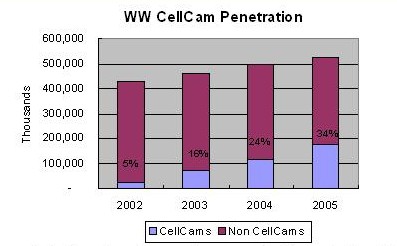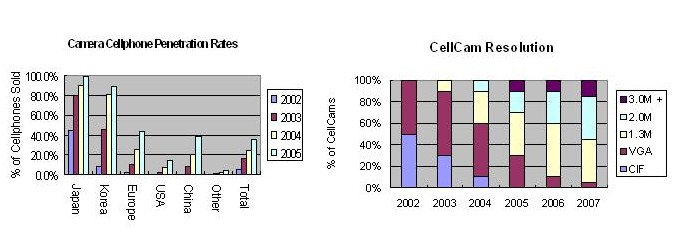The first part of creating a marketing plan is to figure out the size of your market. The total market category is usually referred to as the TAM, or Total Available Market. For example, the TAM for cellphone cameras has shown significant growth over the last few years and is forecasted to penetrate about a quarter of all cellphones in 2004.

Not that the total cellphone forecast in 2004 ranges anywhere from 500 million to 550 million handsets. I have used the smaller number here (500 million) since in forecasting, it is usually better to underestimate and beat forecast than it is to overestimate and come up short. However, what is important here is really the order of magnitude and not the exact number since forecasts are rarely very accurate.
The next part of a marketing plan is to figure out your SAM, or Served Available Market. A particular product usually can't meet the specifications of 100% of the TAM, so the total market share a product can possibly penetrate is usually less than the TAM (It is possible for a SAM to be equal to a TAM, but is unusual in technical products).
This is when segmenting a market becomes useful to figure out the SAM for your product. If your SAM is less than the TAM, it can point you towards product extensions. In the end, instead of one product serving the entire TAM, you typically will have a series of products with different SAMs that together serve the entire TAM.
There are a variety of ways to segment a market (I got this question in an interview: How many ways are there to segment a market. Answer: There is no limit, but how you do it depends on what you are looking for). For the purpose of this analysis, I will use two examples: country penetration and camera resolution (the number of pixels used to capture the picture).

The country penetration rate is dependent on a variety of factors including migration to higher speed cell standards (2.5G and 3G), how the phones are distributed, the churn rate, and cultural factors. These are all reasons as to why in Japan and Korea cameras are essentially a standard feature. The main issue here is that the product I am marketing isn't necessarily usable in every region "as is" and may need modifications depending on cellphone standard (GSM, CDMA) and other country specific issues.
Resolution is also a big issue. I am not going to go through the definitions, but the chart shows the cellcam market moving towards higher resolutions over time (CIF is about 100K pixels and 3M is 3 million pixels).
The last step in this exercise is to figure out your SOM, or Share of Market. How many am I selling today and what is my goal for next year? Who do I sell to? SOM is calculated based on your SAM, but it should be compared to the TAM so you can tell if you should shift your product to a different SAM.
One of the interesting things about the cellcam market is that the companies that sell the most cellcams are not the ones selling the most handsets. The reason for this is the graph above showing the high penetration rates in Japan and Korea versus the rest of the world. This factor should be interesting to watch as cellcams increase penetration worldwide since it has the potential to change worldwide cellphone market share.

This last step also starts you on going through the "3 Cs", or Customers, Company and Competition.

No comments:
Post a Comment